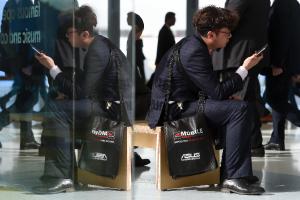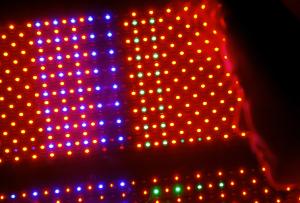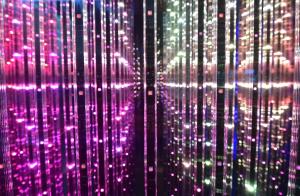http://www.zdnet.com/article/us-lawmaker-to-fbi-dont-use-lawsuit-to-circumvent-congress-on-encryption/
http://www.nytimes.com/2016/02/24/technology/justice-department-wants-apple-to-unlock-nine-more-iphones.html?_r=0
First it was only one, for terrorism and now it at least 9 more and I heard one report it was a dozen, them it will be every single small town police department wanting to do it for traffic stops. It is just the tip of the iceberg.
Sea levels rose faster in 20th century than in previous 2,700 years, says study
Scientists have modeled a history of the planet's sea levels spanning back 3,000 years, and concluded that the rate of increase last century "was extremely likely faster than during any of the 27 previous centuries."
Bob Kopp, a climate scientist at Rutgers University who led the research, said in a statement on his website that he and his collaborators had determined with 95% probability that the rate of sea level increase in the 1900s was faster than during any century since at least 800 B.C.
It is not that seas rose faster before that date, he wrote -- but "simply that the reconstruction quality isn't good enough before then" to say so with the same level of confidence.
Moreover, the study found that without human-caused climate change, the global sea level would have "very likely" changed by between a 3 centimeter (1.18 inch) drop and a 7 centimeter (2.75 inch) rise over the 20th century -- rather than the 14 centimeter (5.512 inch) rise that was observed.
The study, conducted by a group of 10 climate scientists from universities around the world, was published Monday in the U.S.'s Proceedings of the National Academy of Sciences.
The authors said it was the first estimate, to their knowledge, of global sea level change over the past 3,000 years based on a "statistical synthesis of a global database of regional sea level reconstructions."
It used a new statistical framework to combine reconstructions of 1,300 geological sea level changes in 24 locations around the world, along with measurements from 66 "tide gauges."
The study says the global sea level rose at a rate of 1.4 millimeters (0.05 inches) a year during the 20th century. NASA's figures, which put the current rate of sea rise at 3.4 millimeters (0.13 inches) a year, suggest sea level rise is only accelerating
The report, created from the work of nearly 1,000 researchers worldwide and considered the benchmark study on global warming, projected a rise in global sea levels of 1 to 3 feet (about 30 to 90 centimeters).But researchers last year suggested those predictions could be too conservative, with ice loss from massive melting ice sheets in Antarctica and Greenland being a major concern.
In December, ministers from 195 countries adopted a legally binding agreement in Paris to fight climate change. The goal of the deal is to help the world abandon fossil fuels this century and, specifically, stop global warming "well below" 2 degrees Celsius and, if possible, below 1.5 degrees.
http://www.cnn.com/2016/02/23/world/climate-change-sea-levels-study/
Internet by light promises to leave Wi-Fi eating dust
Barcelona (AFP) - Connecting your smartphone to the web with just a lamp -- that is the promise of Li-Fi, featuring Internet access 100 times faster than Wi-Fi with revolutionary wireless technology.The big advantage of Li-Fi, short for "light fidelity", is its lightning speed.
Laboratory tests have shown theoretical speeds of over 200 Gbps -- fast enough to "download the equivalent of 23 DVDs in one second", the founder and head of Oledcomm, Suat Topsu, told AFP.
"Li-Fi allows speeds that are 100 times faster than Wi-Fi" which uses radio waves to transmit data, he added.
The technology uses the frequencies generated by LED bulbs -- which flicker on and off imperceptibly thousands of times a second -- to beam information through the air, leading it to be dubbed the "digital equivalent of Morse Code".
It started making its way out of laboratories in 2015 to be tested in everyday settings in France, a Li-Fi pioneer, such as a museums and shopping malls. It has also seen test runs in Belgium, Estonia and India.
Dutch medical equipment and lighting group Philips is reportedly interested in the technology and Apple may integrate it in its next smartphone, the iPhone7, due out at the end of the year, according to tech media.
With analysts predicting the number of objects that are connected to the Internet soaring to 50 million by 2020 and the spectrum for radio waves used by Wi-Fi in short supply, Li-Fi offers a viable alternative, according to its promoters.
"We are going to connect our coffee machine, our washing machine, our tooth brush. But you can't have more than ten objects connected in Bluetooth or Wi-Fi without interference," said Topsu.
Deepak Solanki, the founder and chief executive of Estonian firm Velmenni which tested Li-fi in an industrial space last year, told AFP he expected that "two years down the line the technology can be commercialised and people can see its use at different levels."
- 'Still laboratory technology' -
Analysts said it was still hard to say if Li-Fi will become the new Wi-Fi.
"It is still a laboratory technology," said Frederic Sarrat, an analyst and consultancy firm PwC.
Much will depend on how Wi-Fi evolves in the coming years, said Gartner chief analyst Jim Tully.
"Wi-Fi has shown a capability to continuously increase its communication speed with each successive generation of the technology," he told AFP.
Li-fi has its drawbacks -- it only works if a smartphone or other device is placed directly in the light and it cannot travel through walls.
This restricts its use to smaller spaces, but Tully said this could limit the risk of data theft.
"Unlike Wi-Fi, Li-Fi can potentially be directed and beamed at a particular user in order to enhance the privacy of transmissions," he said.Backers of Li-Fi say it would also be ideal in places where Wi-Fi is restricted to some areas such as schools and hospitals.
"Li-fi has a place in hospitals because it does not create interference with medical materials," said Joel Denimal, head of French lighting manufacturer Coolight.
In supermarkets it could be used to give information about a product, or in museums about a painting, by using lamps placed nearby.
It could also be useful on aircraft, in underground garages and any place where lack of Internet connection is an issue.
But Li-Fi also requires that devices be equipped with additional technology such as a card reader, or dongle, to function. This gives it a "cost disadvantage", said Tully.
http://news.yahoo.com/internet-light-promises-leave-wi-fi-eating-dust-135433368.html;_ylt=AwrC1zEKZ8xWrAkAtqjQtDMD;_ylu=X3oDMTBydDI5cXVuBGNvbG8DYmYxBHBvcwM2BHZ0aWQDBHNlYwNzcg--



No comments:
Post a Comment